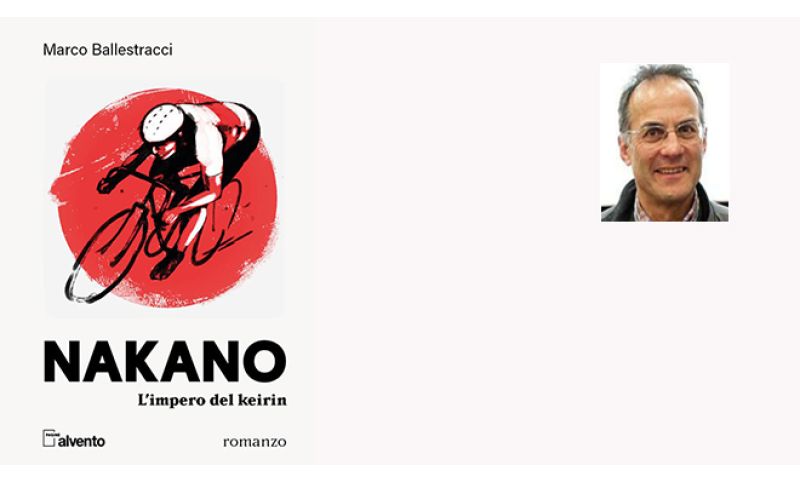

Speed is an art. It's not just the variation of a body's position over time, not just meters per second or kilometers per hour, not just light in the void. But it's also strategy and communication, it's waiting and timing, it's explosiveness and explosion, it's simulation and improvisation, it's even - paradoxically, incredibly - slowness and immobility. The art, precisely, of speed. That of track cycling.
Marco Ballestracci reaffirms this in his book, title "Nakano", and subtitle, "The Keirin Empire", 192 pages, 19 euros, published by Mulatero for the Pagine alvento series. The author of "Imerio" and "Black Boy Fly" (to mention just two of his cycling works) takes a long run, from June 1945, the Battle of Okinawa, won, and August 1945, atomic bombs on Hiroshima and Nagasaki, suffered, and Kokura, spared, then explains the gamble of rebuilding the country by betting on gambling, the game is cycling, more precisely keirin, a speed race with four to eight competitors behind a motorcycle until, without the motorcycle, they fly to the finish line. Flying through space and time, lights in the void, in the sense of speed. Flying, also in the sense of earth, plummeting, crashing, sliding, burning and flaying themselves, with tail-ends and elbows, save yourself who can. Money invested in betting to restore work and hope, build houses and velodromes, and also impose a winning image of the Japanese empire through Japanese riders.
And here he is, Nakano. Koichi Nakano. Son of art. He appeared to the world in 1976, at the World Championships in Monteroni, beaten in the semi-final by Giordano Turrini and preceded in the third-place final by his compatriot Joshua Sugata. Then, from 1977 to 1986, ten consecutive world titles. An absolute domination, dictatorship tyranny monopoly, empire. Not in keirin, which was his specialty, but in speed, a less collective and more personal duel, also more Western, somehow different, if only because international velodromes had a shorter straight than Japanese velodromes, and therefore it was essential to modify habits and tactics and anticipate the moment to emerge from the opponent's slipstream and rush to the finish line.
Nakano, now almost seventy, was a concentrate of muscles and fibers, rage and fury, tradition and inspiration. And this is where Ballestracci combines a story of speed with the geography of slowness, precisely that of tradition and precisely that of inspiration, at the basis of Nakano's philosophy and successes. Yes: appointments, bows, speeches. Yes: proverbs, sayings, principles. Yes: wisdom, philosophy, style. Yes: sake, geisha, honorable sir. And from here, with a studied grammar, a respectful language, a millennial slowness, he introduces us to trajectories, apneas, risks. The world of speed. Silent decibels, invisible watts. And poetic, in its way. Because Nakano himself, who seems so mythical and granitic, impassive and unperturbed, had a deep soul, a sensitive heart. And in the moment of attack, even on the pedals, he felt in the air a melody of "koto", the signal of a favorable omen.
It's a novel, Ballestracci's "Nakano". Not a biography, not a manual, not an essay. But a long story, which begins slowly, continues quickly and ends musically, precisely with "the most blessed of sounds" and its "sweet melody".

Se sei giá nostro utente esegui il login altrimenti registrati.